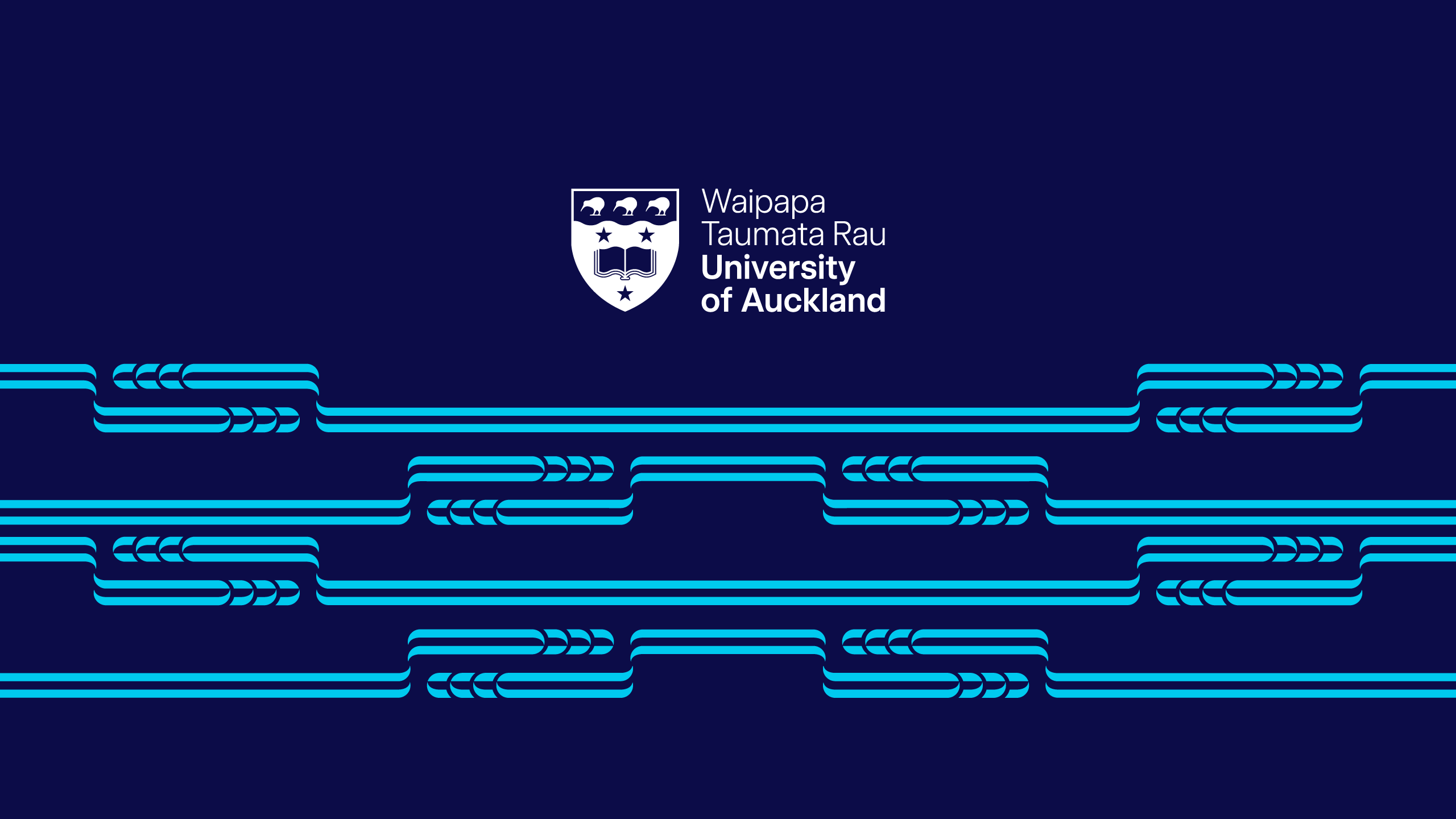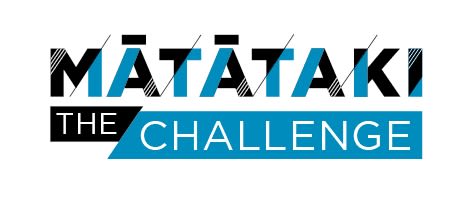Sir Richard Faull
A brain for science, a heart for the people
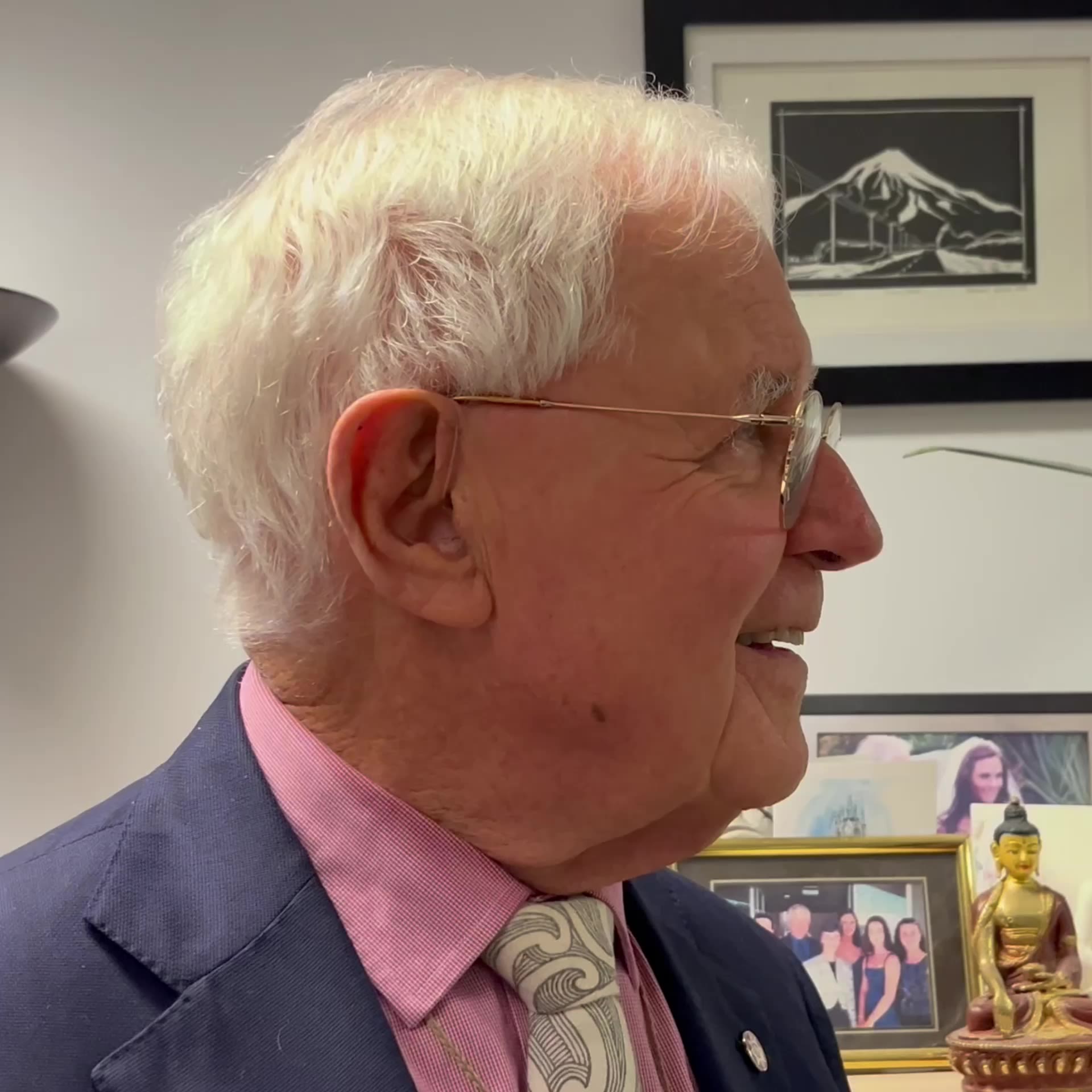
By Rose Davis
From humble beginnings as a baby in a box in the corner of his parents' general store in rural Taranaki, Distinguished Professor Sir Richard Faull launched a stellar career in neuroscience.
He is famous for globally significant breakthroughs in brain research and winning awards many only dream about. In 2007, Sir Richard won New Zealand’s highest scientific accolade, the Rutherford medal,and he was knighted for services to brain research a decade later.
For the past 16 years, he has been founding director of the University of Auckland Centre for Brain Research, but he will soon shift into a part-time role. The 80-year-old is also a brilliant storyteller.
Faull as a toddler.
Faull as a toddler.
His parents, Wilfred and Phyllis Faull, had no university education. Born in 1945, the second of their five sons, Sir Richard’s early years might sound incongruous with his later trailblazing success as a brain scientist. But the values he learned in his childhood echo through his life and work.
From as early as Sir Richard can remember, he pitched in with his parents and brothers in the general store they ran, wrapping warm loaves of bread and marking them with customers’ names first thing in the morning, measuring out flour from sacks and vinegar from barrels, and helping deliver groceries to people’s homes after school.
“We knew everyone in the community. We would go into their homes and see the diversity of the families – Māori, Pakeha, some had money, and some were extremely poor and had dirt floors.
“My mum and dad were very socially conscious and taught us that we were placed on this earth to help people,” he says.
His father was of Ngāti Rāhiri and Te Āti Awa descent, but Sir Richard didn’t identify as Māori during his childhood. He learned strict Christian values from his close, Anglican family, and that faith remains today.
Faull (second from left) and family.
Faull (second from left) and family.
As a child, his love of maths, science and biology began to grow.
“I was a bit of a nerd and a bookworm. I pleaded with mum to have a desk in my room, which I shared with my brother. So we got an old bed-end and used that as the desk-top and the posts for the desk legs."
“I still love books – you should see my study at home.”
Numerous cousins visited the Faull family farm, with the store on the corner. “We had lots of fun times, getting up to mischief, building dams in the creek near the old orchard, where there were apples, walnuts, ferns, pungas…”
He grabbed every opportunity to learn about cars and was thrilled when the electrician across the road taught him electronics how to build a radio. These practical skills later became vital for building equipment to study rat brains.
From the three-room Tikorangi School, he moved on to Waitara High School, where he taught himself sciences and “fell in love” with the knowledge he discovered. After winning dux in 1962, he went on to win a Taranaki scholarship that paid for his university studies.
Auckland was the first university he studied at, before heading to Otago University in Dunedin. “I worked in the freezing works at Waitara in the holidays and with my scholarship, that was enough to pay my way through – otherwise I couldn’t go to university.
“I worked in the fellmongery – that’s where they treated the skins of about 13,000 sheep a day – and it stank, it was terrible, but it was good money and you got to meet the local freezing workers.”
Faull as a young man.
Faull as a young man.
In 1966, Sir Richard met “the two loves of my life” – the brain and his future wife, Diana, the daughter of Archdeacon Douglas Millar of Dunedin and a teacher. “We met at a student party. I saw her from afar and it was love at first sight. I got her phone number from a friend who knew her – that was the best decision of my life.
“That same year, I saw the human brain for the first time as a third-year medical student and I thought ‘that’s just incredible’.”
Sir Richard decided to take a year out to research the basal ganglia in rat brains for a Bachelor of Medical Science. He hoped to learn more about the connections involved in Parkinson’s and Huntington’s diseases. He had to make his own equipment to conduct his experiments, building a machine with electrodes and developing tissue-staining techniques.
The hard mahi was worth it – he discovered a new pathway from the basal ganglia to the thalamus. “The excitement of scientific discovery turned me on.
“My research was published in a top journal of the day and I got requests from experts around the world for a copy of my paper – all the big names. I couldn’t believe it.”
Faull at his graduation in 1967.
Faull at his graduation in 1967.
After completing his Bachelor of Medical Science in 1967 and Bachelor of Medicine and Surgery in 1970, he married Diana and became a house surgeon in Auckland. He considered a career as a neurosurgeon, but realised more research was needed to expand the surgical possibilities for the brain.
A fellowship from the former Medical Research Council allowed him to do a groundbreaking PhD at the newly established medical school in Auckland. Using rat brains, he discovered new connections between the cerebellum and spinal cord. His findings were celebrated, because they helped neuroscientists understand the functional organization of the brain, revealing the motor pathways in rats and humans.
After gaining his PhD in neuroanatomy in 1975, Sir Richard and Diana set off to the United States, where he worked with leading brain experts at Massachusetts Institute of Technology and NASA’s Ames Research Centre. A Harkness Fellowship covered the cost of his post-doctoral studies overseas – but the money ran out before his research was finished.
Seeking help back home, he was offered $1,000 from the Taranaki Māori Trust Board. Initially, he was reluctant to accept the grant, because he didn’t feel 'Māori enough'. “They said ‘You are Te Āti Awa, Ngāti Rāhiri. We want to help you and one day, you will come home to Taranaki and look after the people’.”
A Medical Research Council fellowship funded his travel around brain research institutes in Europe and the United Kingdom, before he landed back at the University of Auckland as a senior lecturer of anatomy in 1978.
Faull, middle back, at his first conference in Adelaide.
Faull, middle back, at his first conference in Adelaide.
By examining the brains of people after they died, Sir Richard was able to definitively identify Huntington’s. “Families were so grateful to have the final word. Mostly it was ‘yes’, but occasionally it was ‘no’, and they were ecstatic.
“All of the families said we could keep the brain to find out why the Huntington’s gene kills brain cells and to help their children. That changed my life.”
“I had been studying the rat brain and they were giving me the brain of their mum or dad - and that was the most valuable gift they could give to science.”
Sir Richard discovered a high level of variation in the brains of people who had died with Huntington’s that was at odds with what textbooks of the day described. The range of patterns of cell death was perplexing.
A colleague, Professor Lynette Tippett, suggested gathering the life stories of people with Huntington’s, whose brains had been donated, to try to understand the variation. By putting together symptom histories from families and clinicians and patterns of cell death in the brains, the team was able to make a startling discovery.
“We showed what parts of the basal ganglia are involved in mood and which parts are involved in movement. This was revolutionary.”
By the early 1990s, Sir Richard had gathered about 50 brains and asked the Neurological Foundation if they might fund a human brain bank. In 1994, they approved his request and the Neurological Foundation Human Brain Bank now holds tissue from more than 1000 brains. It’s an invaluable resource for scientists researching neurodegenerative diseases ranging from Alzheimer’s to motor neurone disease.
Around the same time, he helped introduce the whakanoa – a spiritual blessing ceremony – so Māori medical students could feel more comfortable working with human body tissues from cadavers. The ceremony was the first to consider tikanga Māori in a human anatomy laboratory in Aotearoa.
Over the years, Sir Richard developed a multidisciplinary research team using tissue from the human brain bank at the University of Auckland, including neuropsychologist Professor Lynette Tippett, neuropharmacologist Professor Mike Dragunow, geneticist Professor Russell Snell, and neuroscientist Professor Maurice Curtis.
In 2007, Sir Richard’s team was the first to discover that adult stem cells proliferate in the brains of people with Huntington’s disease, in an attempt to repair the brain.
“No one had realised that the human brain could make new brain cells. We were the first to show that in the human brain there were adult stem cells which could multiply. Uncovering the pathway for neurogenesis made us famous.”
The research opened up the possibility of developing treatments that would help brain cells regenerate after they have been lost through neurodegenerative disease. It earned them the front cover of the major research journal, Science.
The secret to their success was collaborating with experts from different scientific fields, hospital clinicians and the families of patients, says Sir Richard.
The boy who grew up in a family store that was a community hub decided to create a centre where great minds could pitch in together for the common good.
In 2009, the Centre for Brain Research was launched as a platform for national and international academic collaboration, working with neurologists, neurosurgeons and others in the hospital, community organisations, and families.
The centre now has more than 100 university research groups, and the team has published more than 300 articles on a range of human brain disease research breakthroughs. About $5 million a year in philanthropic and donor research funding is given to the centre.
Sir Richard says being director of the centre has been 'a dream come true.' “I learned from mum and dad to always be humble and that’s part of the ethos of the centre. It’s not about ego; it’s about working together for the good of the people.”
Giving back to communities who have contributed to the centre’s research has been a vital component of his work.
Faull at his marae with whānau.
Faull at his marae with whānau.
He’s often away, giving talks around Aotearoa to inform communities about recent research on brain diseases. During a talk in his hometown of Taranaki, he found a way to fulfil the prophecy of Te Āti Awa kaumatua who had said he would one day return to help their people.
A whanau from Te Āti Awa affected by Huntington’s asked for his help in living with the tragic disease. Sir Richard was overjoyed to find a way to give back to his community. He began holding annual trips to Taranaki, where he meets with Māori whanau and holds hui on marae.
“I started to come home to my Te Āti Awa, Ngāti Rāhiri roots and began to help the people.”
With the Centre for Brain Research’s Deputy Director Māori Dr Makarena Dudley, Sir Richard has visited 17 marae from Kaitaia to Invercargill, discussing the best ways to look after people with dementia and other brain diseases. In 2023, in a ceremony at Waipapa marae, University of Auckland, Sir Richard was bestowed a korowai - feather cloak - and a tokotoko named Aumangea, crafted by master carver Rangi Bailey of Te Āti Awa .
“They said ‘now you are a rangatira’. It was so humbling, it made me cry,” he says.
Sir Richard receiving his korowai at Waipapu marae, Te Āti Awa.
Sir Richard receiving his korowai at Waipapu marae, Te Āti Awa.
When he shifts into a part time role later this year, Sir Richard plans to spend more time with Diana, their three daughters, twin sons, and 11 grandchildren. He will be closely watching for breakthroughs in neuroscience, which he predicts might emerge from gene therapies, which target the underlying genetic causes of brain disease.
“We also need to look more at the prevention of brain diseases. Basically, what’s good for your heart is good for your brain – good food, exercise and social interaction.”
His advice to young researchers is to let their heart lead the way.
Professor Sir Richard with his family.
Professor Sir Richard with his family.
“Follow your passion and never ever give up on your dream.”
“There will always be obstacles along the way – they’re there to test your resolve for your ambition in life.
“Take risks, because they will open up opportunities you never dreamed of,” he says.
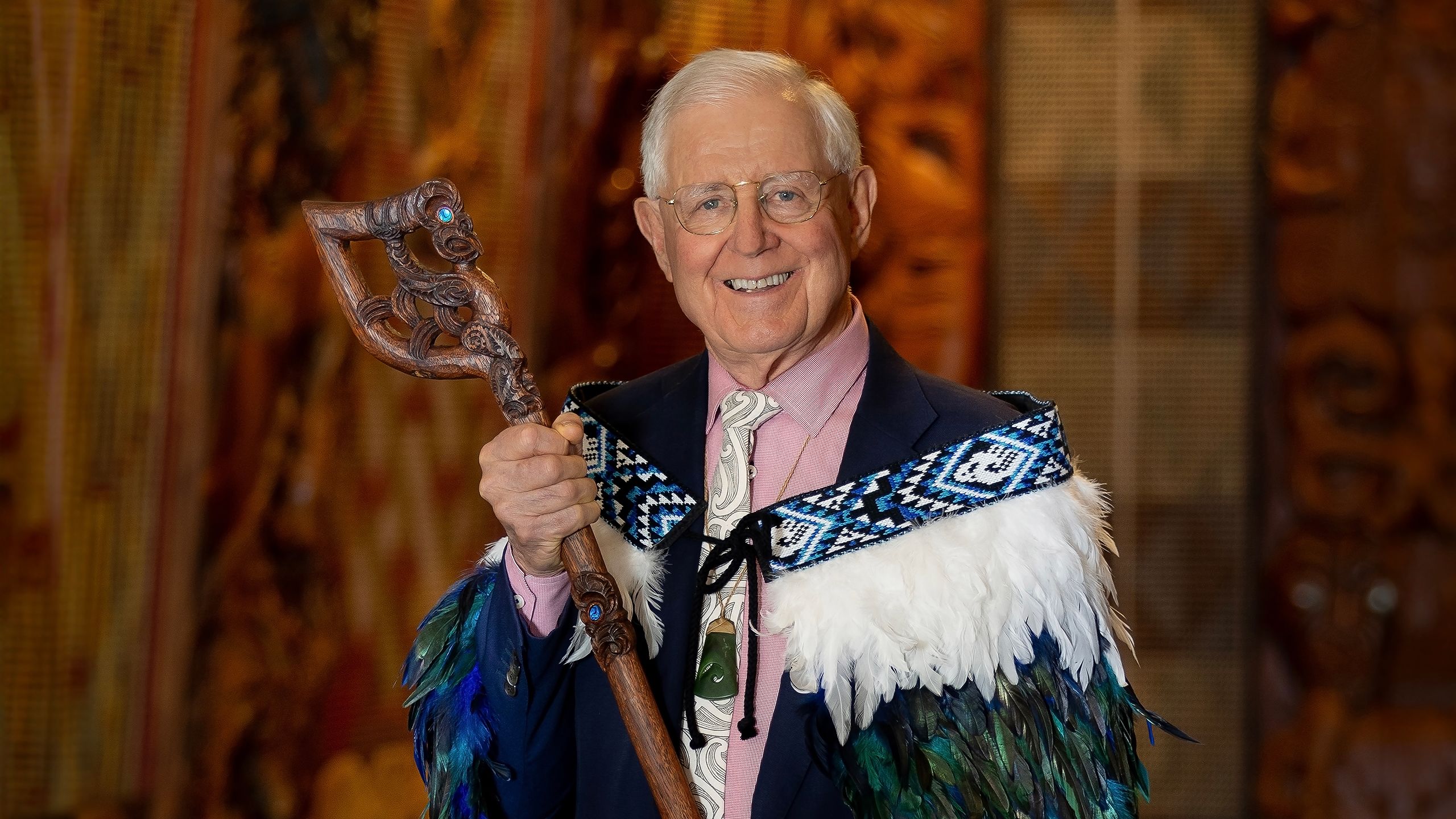

Unequivocally positive
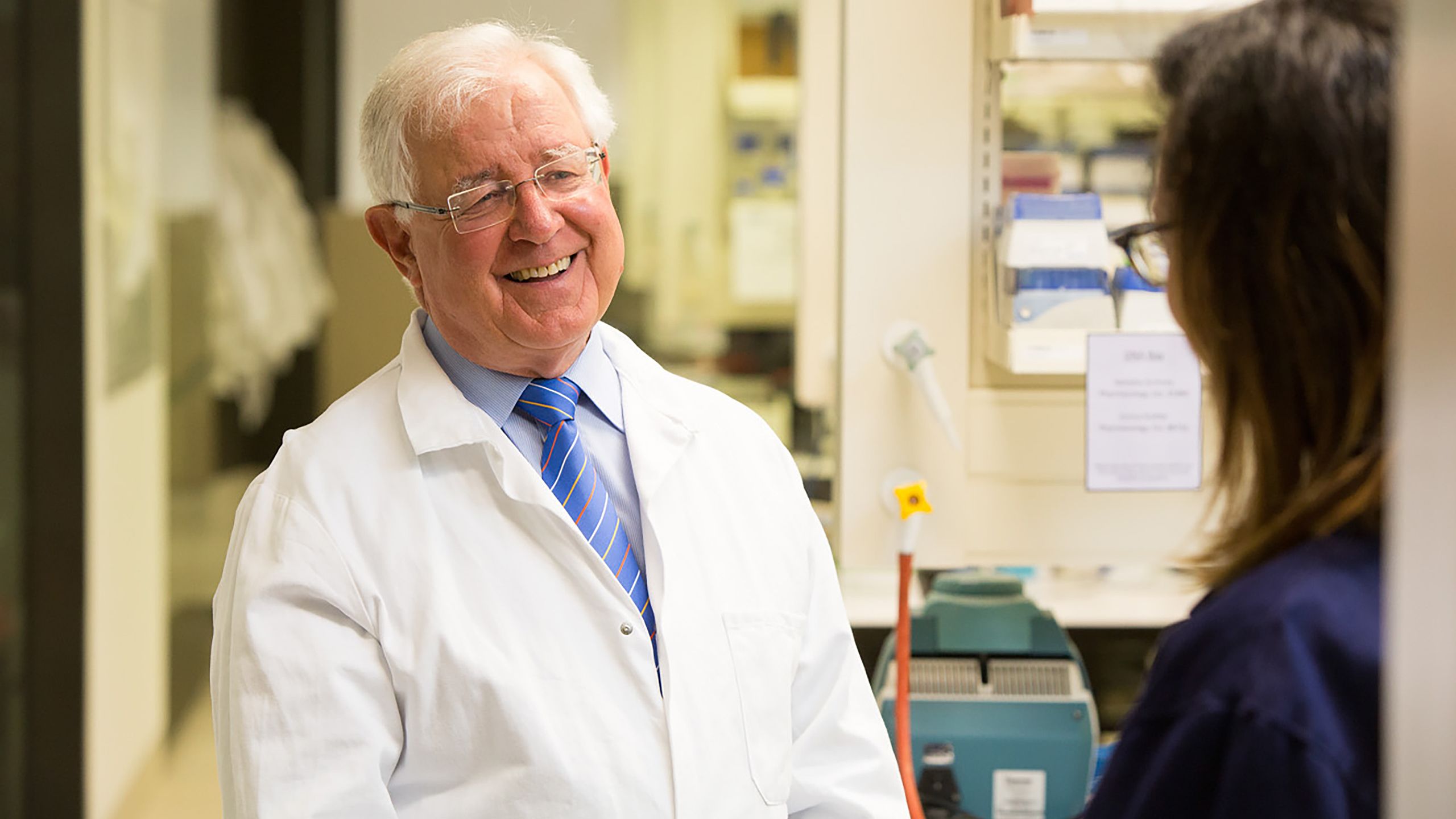
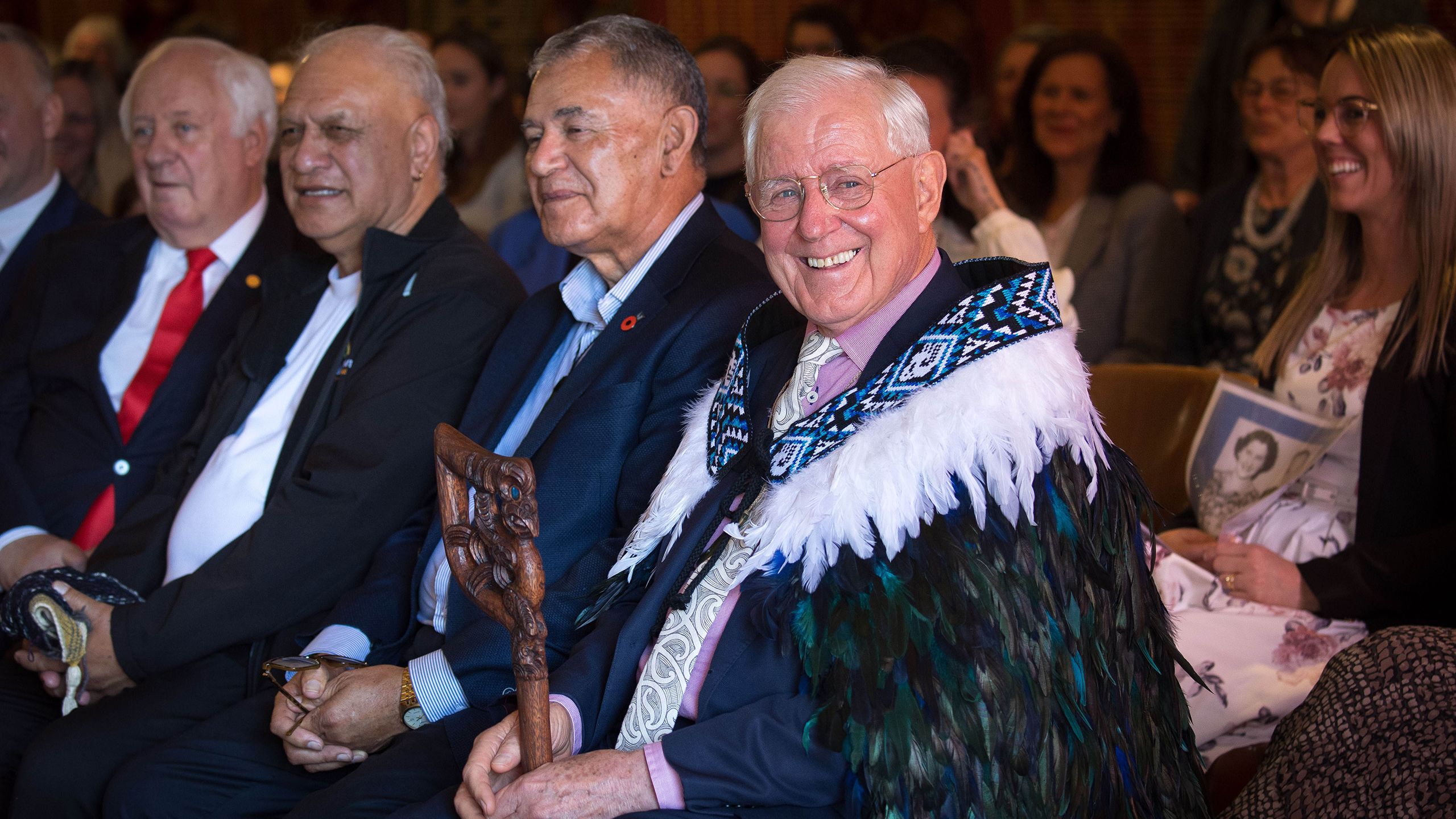
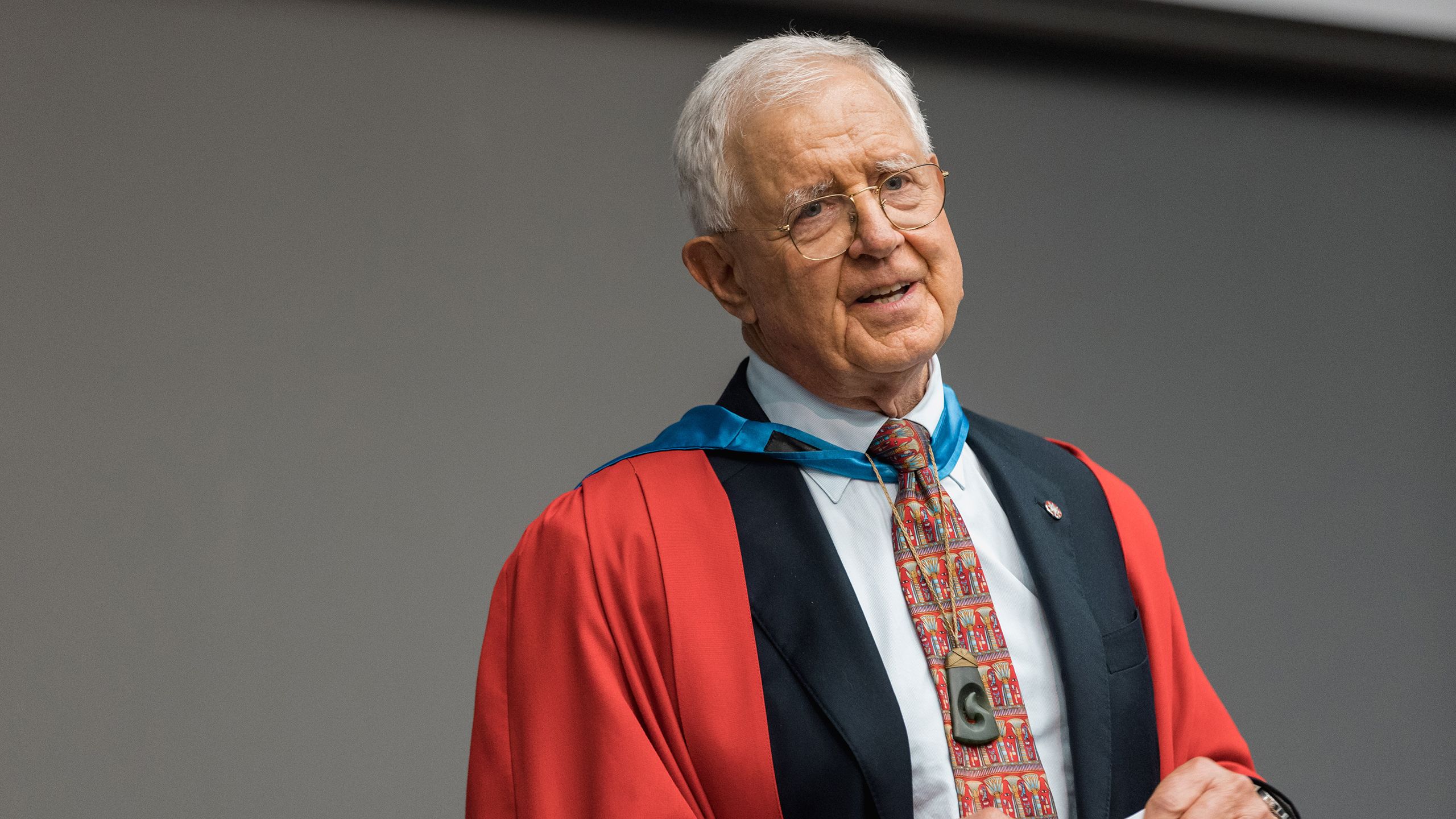
Geneticist Professor Russell Snell says Sir Richard has become a close friend over the course of their 28 years working together.
Snell says Sir Richard has always been supportive of his “mad ideas”.
“Richard has respect for all people and does not hide behind his office.”
Neuropharmacologist Professor Mike Dragunow says Sir Richard always says ‘yes’ to new initiatives and sees solutions where others see problems.
“He’s unequivocally positive about life.”
Senior research fellow Thomas Park says Sir Richard has shaped every aspect of his career in brain science.
“Richard’s undergraduate lectures from 2001 on the human brain were the reason I chose neuroscience as my major.”
